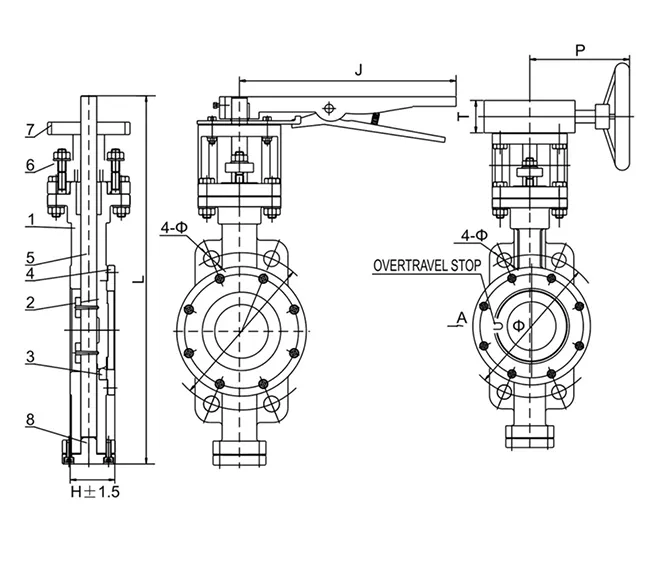nóv . 08, 2024 15:07 Back to list
floating ball check valve
Floating Ball Check Valve A Comprehensive Overview
Floating ball check valves are critical components used in various piping systems, particularly in fluid transfer applications. They serve the essential function of allowing flow in one direction while preventing backflow, ensuring system integrity and optimal performance. This article delves into the construction, working principles, advantages, and applications of floating ball check valves.
Construction and Design
The floating ball check valve is designed with a spherical ball that 'floats' in a valve seat. This unique design distinguishes it from other types of check valves. The ball is typically made of materials such as stainless steel, PVC, or brass, chosen based on the application’s requirements.
The valve consists of three main parts the body, the ball, and the seat. The valve body is usually cylindrical, providing a pathway for fluid flow. The seat is a critical component that the ball rests against when there is no flow, effectively sealing the valve. The ball is free to move upwards when the pressure of the incoming fluid exceeds the force of gravity acting on the ball, allowing flow to pass. When the pressure drops or the flow reverses, the ball returns to its seated position, preventing backflow.
Working Principle
The operational mechanism of a floating ball check valve is relatively straightforward. When fluid moves through the valve in the designated direction, it exerts pressure on the bottom of the floating ball. This pressure forces the ball upward, lifting it off the seat and allowing the fluid to flow through the valve.
The beauty of this design lies in its simplicity; as soon as the flow stops or reverses, gravity pulls the ball back down, sealing the valve and preventing reverse flow. This automatic action ensures that the system remains efficient, free from contamination or damage that can occur due to backflow.
Advantages of Floating Ball Check Valves
Floating ball check valves offer several advantages, making them a popular choice in various applications
1. Simplicity of Design Their straightforward mechanism makes them easy to operate and maintain, reducing downtime and maintenance costs.
2. Effective Sealing The floating ball creates a tight seal when not in use, significantly minimizing the risk of backflow.
floating ball check valve

4. Low Pressure Drop The design of a floating ball check valve contributes to a low-pressure drop across the valve, enhancing system efficiency.
5. Versatility These valves are suitable for a wide range of liquids and gases, making them adaptable to various industrial and commercial applications.
Applications
Floating ball check valves are employed in numerous industries, demonstrating their versatility. Some common applications include
- Water Supply Systems In municipal water systems, these valves help prevent contamination and maintain water quality by stopping backflow.
- Oil and Gas Industry Floating ball check valves are critical in pipeline systems for the transport of crude oil, natural gas, and other petrochemicals.
- Chemical Processing In chemical plants, they ensure the safe and efficient transfer of chemicals without the risk of reverse flow or contamination.
- HVAC Systems These valves are used in heating and cooling systems to prevent the backflow of fluids, protecting pumps and other equipment.
- Agricultural Irrigation Floating ball check valves help maintain consistent flow and pressure in irrigation systems, ensuring efficient water use.
Conclusion
In summary, floating ball check valves play a vital role in many fluid transport systems. Their simple yet effective design ensures reliable operation, preventing backflow and maintaining system integrity across various applications. As industries continue to evolve and demand more efficient solutions, the floating ball check valve remains a popular choice for engineers and operators alike, contributing to enhanced safety and efficiency in fluid management systems. Understanding their functionality, advantages, and applications can significantly enhance the planning and execution of projects involving fluid dynamics.
Share
-
Reliable Wafer Type Butterfly Valves for Every IndustryNewsJul.25,2025
-
Reliable Flow Control Begins with the Right Ball Check ValveNewsJul.25,2025
-
Precision Flow Control Starts with Quality ValvesNewsJul.25,2025
-
Industrial Flow Control ReliabilityNewsJul.25,2025
-
Engineered for Efficiency Gate Valves That Power Industrial PerformanceNewsJul.25,2025
-
Empowering Infrastructure Through Quality ManufacturingNewsJul.25,2025